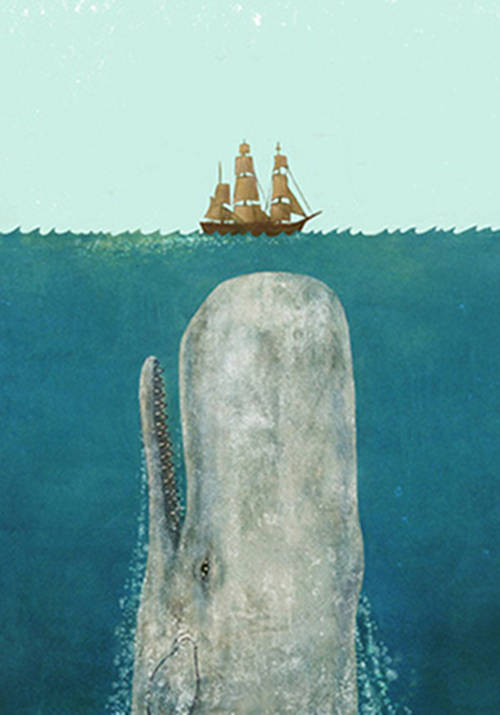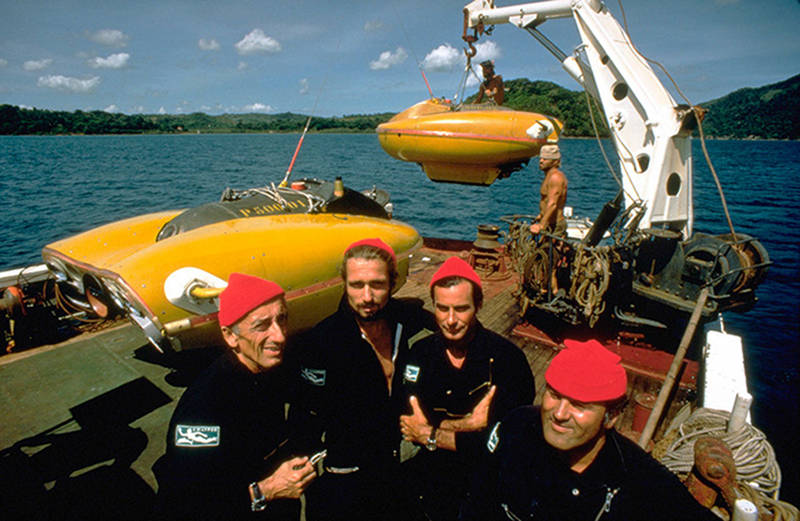
By Saskia Madlener
December 12, 2014
Weather Not Permitting. Video courtesy of Submarine Ring of Fire 2014 - Ironman, NSF/NOAA, Jason, Copyright WHOI. Video produced by Saskia Madlener. Music by Charlie Brooks. Download (mp4, 17.8 MB)
Oceanography is the study of one of the Earth’s greatest and most vast unknowns. Despite centuries of documented exploration, the profusion of nautical tales, and the long history of settlements along every inhabitable coast, we seem to know more about the Moon than the waters that help regulate the Earth’s climate and foster the growth of millions of organisms.

Moby Dick symbolizes the mysteries of the ocean. Image courtesy of Submarine Ring of Fire 2014 - Ironman, NSF/NOAA. Download image (jpg, 39 KB).
Conrad opened our eyes to the exotic islands nestled in the raging South Pacific. Melville mystified one of the largest known creatures on the planet, which happens to thrive underwater. Cousteau shed a light and captured on film the strange and elusive ocean landscape beneath the surface. And James Cameron recently brought us even deeper, manning a sub equipped with cameras and making an eleven-kilometer descent to the depths of the Mariana Trench.
We find ourselves not too far from that very trench now as we explore the Mariana Arc and back-arc to the west. Oceanographers are compiling data on deep-sea volcanoes, hydrothermal vents, and the organisms they help sustain. They came amply equipped with instruments to measure ocean chemistry, deep-sea currents, and the rumbling of a possibly erupting seamount and to gather samples of microbial life, animals, and hydrothermal fluids. They set out to piece together one portion of the greater puzzle concerning the ocean deep, and yet it is this very ocean and being out in its element that makes this work sometimes difficult or even impossible to complete, especially according to a plan carefully crafted months before setting sail.

Jacques Cousteau popularized oceanography for previous generations of oceanographers. Image courtesy of Submarine Ring of Fire 2014 - Ironman, NOAA/PMEL. Download image (jpg, 87 KB).
Though our expedition is already an overall success – we have gathered a variety of samples using the remotely operated vehicle (ROV) Jason; taken CTD casts; detected hydrothermal, maybe even eruptive, activity at a couple of sites; and mapped new areas for a more robust depiction of the seamounts along the Arc – weather is not always permitting.
For the past several days, erratic swells and strong winds from the remnants of typhoons have made certain operations impossible; the ROV Jason, though durable, is best left on deck in these unfavorable conditions. We have therefore changed course and focused on multibeam sonar and CTD efforts to gain a better understanding of both the structures and activity of the seamounts in question.
These days, oceanography is much more about careful planning, adaptive readjusting, delicate problem solving, and compromise than about limitless exploration and a charming crew in red wool hats aboard a picturesque vessel. We boarded the R/V Revelle with a specific mission, limited time and resources, and a vision that most things would go according to plan; but, expeditions like these rarely go according to plan. We are in the ocean after all.
So now, as we wait for the weather to pass, we continue to learn and make discoveries about this relatively unknown ocean terrain and have our sights set on the next Jason dive – weather permitting.
Weather model animation showing Typhoon Hagupit passing south of Guam during the Submarine Ring of Fire 2014 - Ironman expedition. Video courtesy of the StormSurf website (http://www.stormsurf.com/) . Download (mp4, 5.1 MB)